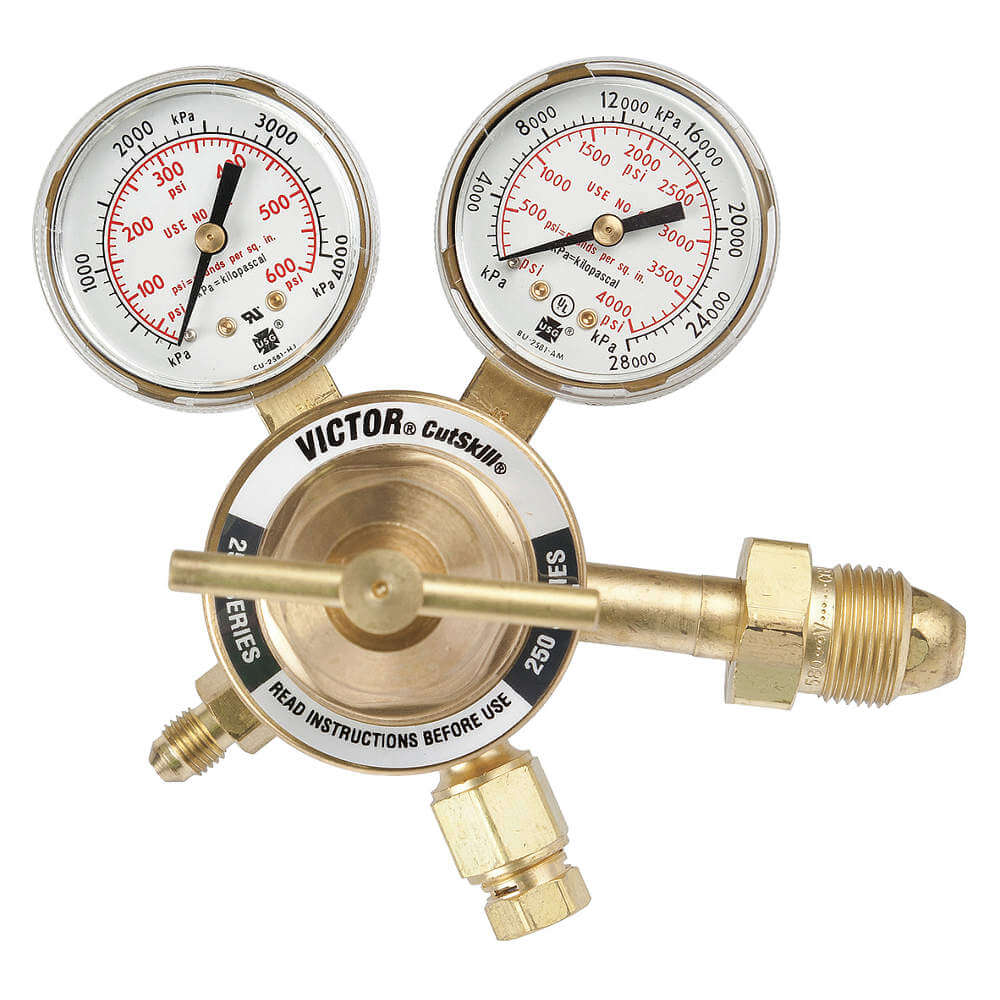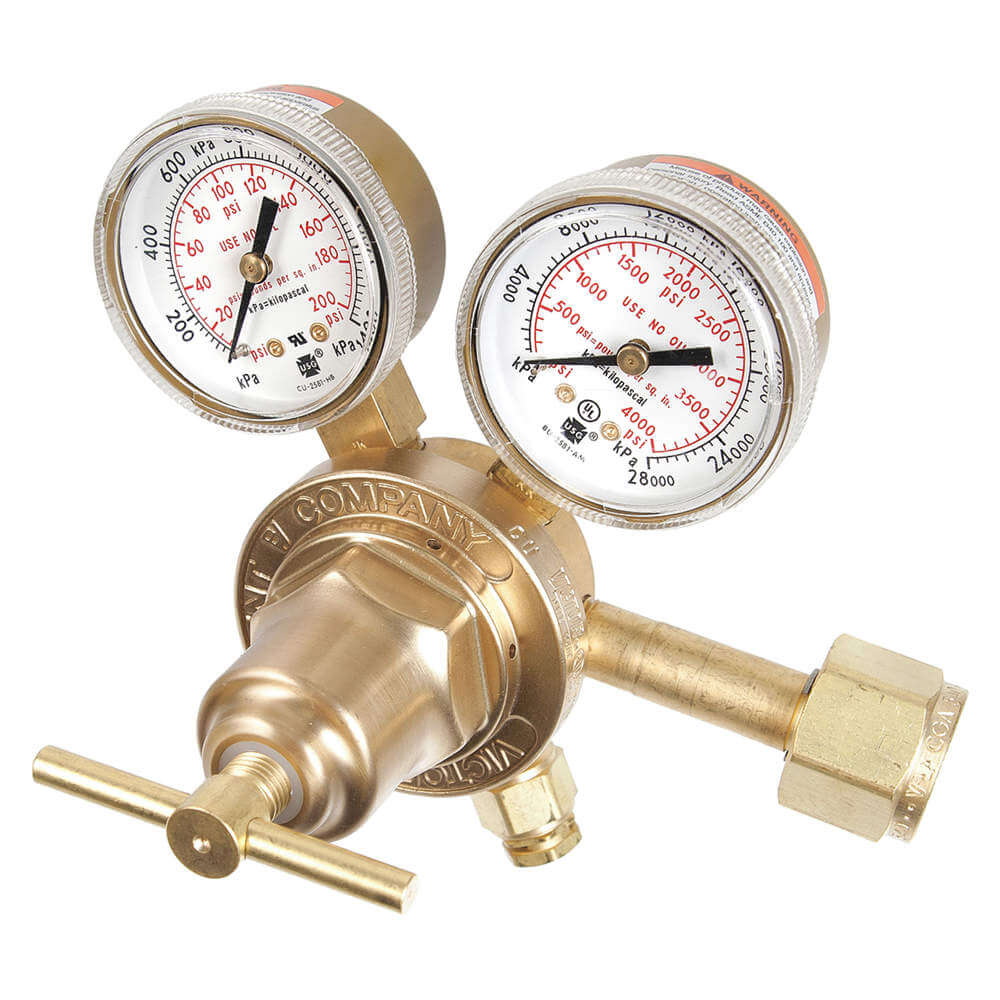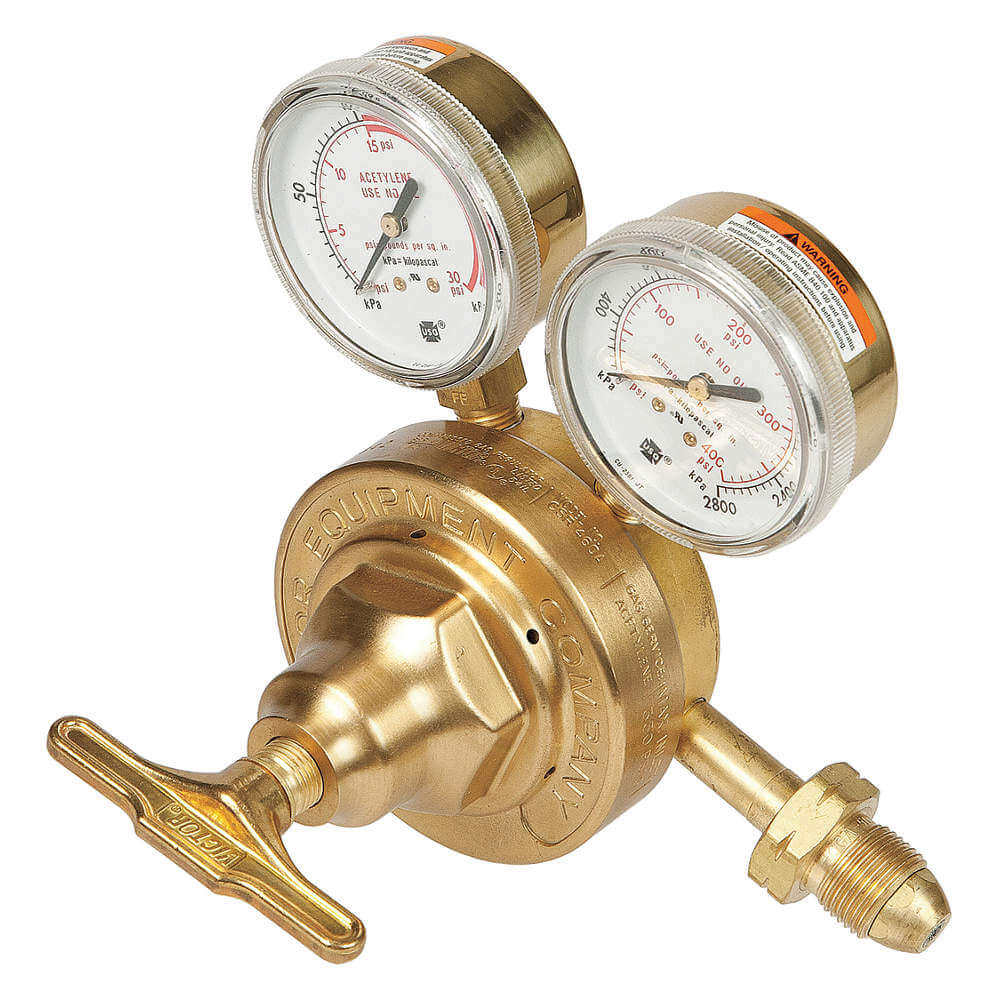The Victor 250 Series regulator, 0781-9134 is a light-duty, medium-capacity purging regulator. It features single-stage design, suitable for use in the light to medium-duty air conditioning operations. Victor 250 Series regulator has a forged brass body for structural rigidity and a Derlin housing cap with 2 inch gauges to provide smooth adjustment. It offers stem type seat mechanism, designed for accurate gas flow and has a neoprene diaphragm to ensure proper usage in any condition. This Victor 250 Series regulator is suitable to regulate and control the flow of high-pressure gases, including argon, hydrogen, nitrogen, oxygen in a cylinder. Victor 250 Series regulator unit requires a CGA-580 inlet connection for quick and effective installation without the need for a wrench or thread sealant.
Uses:
Victor 250 Series regulator, 0781-9134, offers a wide combination of features, making it useful for welding and cutting torches in light to medium-duty air conditioning operations.
Working Mechanism:
Purging is the act of eliminating the contents of a container or pipe and restoring it with another liquid or gas. Purging is important in piping, pipeline, welding and industrial processes and removes contaminants from the vessels and piping, preventing corrosion. Victor 250 Series regulator unit, 0781-9134 has single-stage regulator design in which when the supply pressure gets low, the lower inlet pressure causes the outlet pressure to increase. Moreover, the diaphragm loading spring compression is adjusted to compensate and allow the tank to rapidly dump its remaining contents.
Features:
- Victor 250 Series regulator, 0781-9134 is designed for light to medium-duty operations in air conditioning, purging and welding applications.
- This purging regulator has a forged brass body, ensuring structural rigidity, a Derlin housing cap with 2 inch gauges to provide smooth adjustment.
- The stem type seat mechanism of the unit is suitable for accurate gas flow.
- Further, the neoprene constructed diaphragm is built for proper usage in any condition.
- It delivers pressures ranging from 10 to 250 psi and a maximum inlet pressure of 3000 psi.
Standards and Approvals:
- Victor 250 Series regulator, 0781-9134 is listed to UL252 by ETL to deliver high quality services and user safety.
Installation:
- Victor 250 Series regulator, 0781-9134 uses CGA-580 inlet connection for quick and effective installation without the need for a wrench or thread sealant.
- Close the outlet valve and open the tank valve. This will pressurise the regulator.
- Adjust the regulation pressure to approximately 20% of range.
- Close the tank valve and crack the valve on the regulator outlet.
- Allow the gas to discharge until the regulator pressure gages approach zero.
- Close the outlet valve prior to releasing the last bit of gas pressure.
- After the purge cycles, open the tank valve, and set the regulator to the proper operating pressure.
- Crack the outlet valve slightly and reattach the gas line to the analyzer.
- Open the outlet valve fully.
Frequently Asked Questions:
Q. What is the difference between a single-stage and two-stage regulator?
A. Single-stage gas pressure regulators minimise cylinder pressure to outlet or delivery pressure in one step, whereas two-stage gas pressure regulators eliminate cylinder pressure in two steps, delivering a constant outlet pressure without periodic readjustment.
Q. Do gas regulators need to be vented?
A. The natural gas regulator is a sensitive component of the metre set, requiring it to be vented and complied with federal and local venting needs. The vent functions as a safety measure, permitting the diaphragm within the regulator to breathe.
Q. How does a regulator fail?
A. A regular can fail when the excessive flexing of the metal diaphragm causes a radial crack and permits gas to escape to the atmosphere through the vent hole configured in the bonnet. Another most common type of regulator failure is the internal leak, also known as crawl or creep.
Q. Why must the pressure be released from a regulator when work is finished?
A. The pressure from a regulator is released, after finishing the work, to protect damage to the diaphragm, gauges & adjusting springs (if under a load).
 Change Country
Change Country

 In Stock : 16 Units
In Stock : 16 Units

 Trade pricing is available for
Trade pricing is available for  Order Value should be £500+
Order Value should be £500+